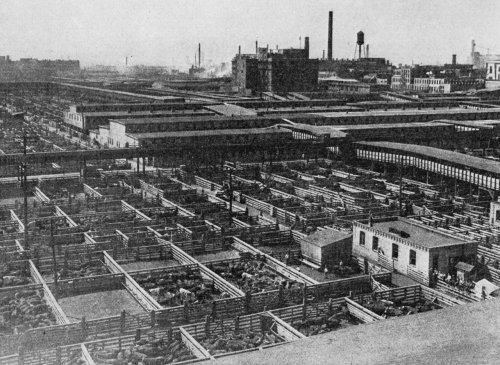 |
| Union Stockyards, Chicago 1920 Pax Canadiensis |
One particularly revolting facet of the industry was the use of beef which had developed cysts due to the use of cheap fodder. Upton wrote
"It seemed that they must have agencies all over the country, to hunt out old and crippled and diseased cattle to be canned. There were cattle which had been fed on "whisky-malt," the refuse of the breweries, and had become what the men called "steerly" - which means covered with boils. It was a nasty job killing these, for when you plunged your knife into them they would burst and splash foul-smelling stuff into your face; and wean a man's sleeves were blood, and his hands steeped in it, how was he ever to wipe his face, or to clear his eyes so that he could see? It was stuff such as this that made the 'embalmed beef' that had killed several times as many United States soldiers as all the bullets of the Spaniards, only the army army beef, besides, was not fresh canned, it was old stuff that had been lying for years in the cellars." As quoted in (Hofstadter, Richard, ed. The Progressive Movement, 1900-1915. New Jersey: Prentice Hall, 1963.)
No comments:
Post a Comment